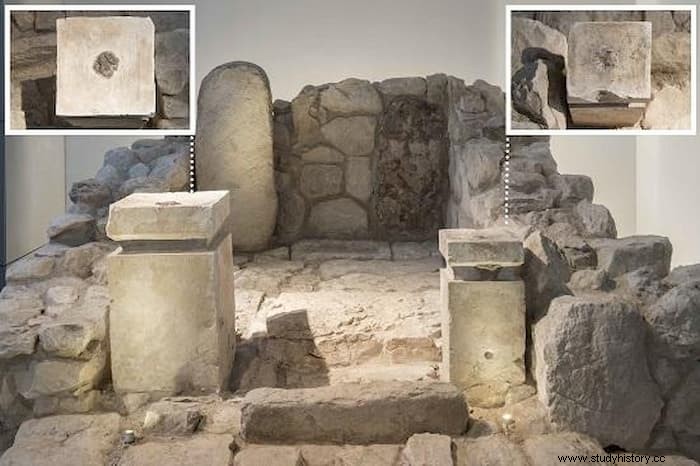Analysis of material from two Iron Age altars discovered at a sanctuary in Tel Arad, in the Beer-sheba valley, Israel, revealed that they contained cannabis and frankincense, according to an article in the journal of the University's Institute of Archeology. from Tel Aviv.
Previous excavations had revealed the existence of two overlapping fortresses, dated between the 9th and early 6th centuries BC, guarding the southern border of biblical Judea. Important Iron Age finds were unearthed here, including the well-preserved shrine, which was dated to between 750 and 715 B.C.
Two limestone altars were found in it (the smaller is 40 centimeters high and about 20 by 20 centimeters at the top; the larger is about 50 centimeters high and 30 by 30 centimeters at the top) at the entrance to the inner sanctum (or holy of holies , the holiest place in a Jewish temple) of the sanctuary.

An unidentified solidified black organic material was preserved on the surface of both altars. Previous analyzes of these materials failed to identify their contents and this obscure material was recently subjected to organic residue analysis by modern methods.
The study reveals that the smaller altar had cannabis mixed with animal manure to facilitate heating, while the larger altar contained traces of incense that was mixed with animal fat to promote evaporation.
These unique finds shed new light on cult practices in biblical Judea, suggesting that cannabis was used here as a deliberate psychoactive, to stimulate ecstasy as part of cult ceremonies.

According to lead author Eran Arie of the Israel Museum in Jerusalem, this is the first time cannabis has been identified in the Ancient Near East; its use in the sanctuary must have played a central role in the cultic rituals that were performed there .
Frankincense comes from Arabia. Thus, the presence of frankincense in Arad indicates Judea's involvement in the South Arabian trade even before the Assyrian empire. Arad provides the first evidence of the presence of frankincense in a clear cultic context.
